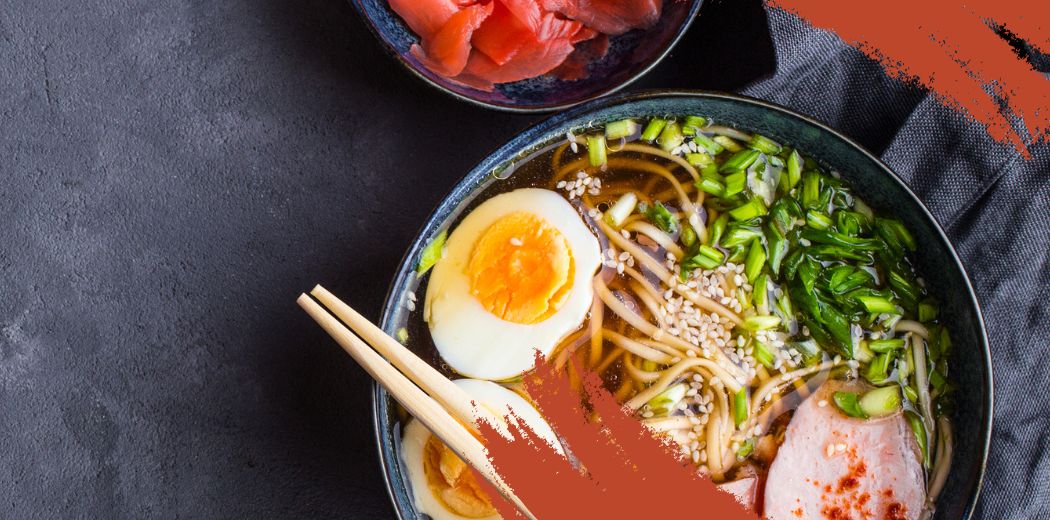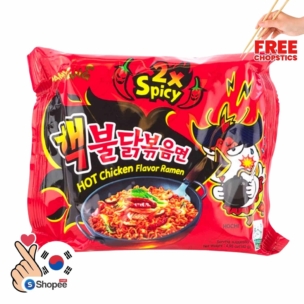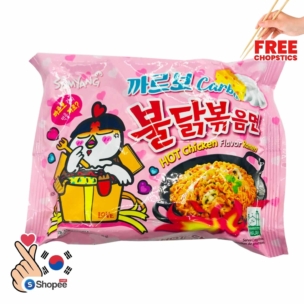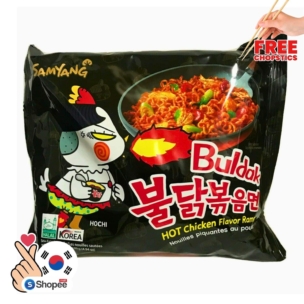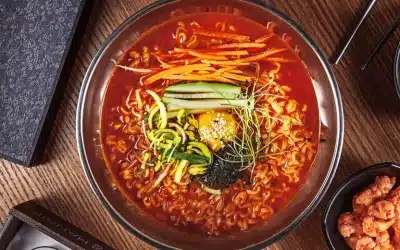The Ultimate Guide to Making Perfectly Cooked Ramen Noodles
Are you tired of soggy, overcooked ramen noodles that never seem to turn out quite right? Look no further! This ultimate guide will teach you how to make perfectly cooked ramen noodles every time. From choosing the right type of noodle to mastering the broth, we’ll walk you through each step of the process. Whether you prefer a spicy miso broth or a classic soy sauce flavor, we’ve got you covered. We’ll even show you how to add the perfect toppings to take your ramen to the next level. With this guide, you’ll never have to settle for subpar ramen again. So grab your chopsticks and get ready to impress your taste buds with the ultimate bowl of delicious, perfectly cooked ramen noodles.
Types of Ramen Noodles
Did you know that there are several types of ramen noodles to choose from? Each type has its own unique texture and flavor. Here are some of the most popular types of ramen noodles:
### Chukamen
Chukamen is the most commonly used noodle for ramen. It’s made with wheat flour, salt, and water, and has a slightly chewy texture. Chukamen is usually yellow in color and can be straight or wavy.
### Hakata-style Ramen Noodles
Hakata-style ramen noodles are thin and straight with a firm texture. They’re made with a blend of wheat flour and kansui (a type of alkaline mineral water). Hakata-style noodles are typically used in tonkotsu ramen.
### Soba Noodles
Soba noodles are made with buckwheat flour and have a nutty flavor. They’re thinner than chukamen noodles and are sometimes used in ramen dishes.
### Udon Noodles
Udon noodles are thick and chewy and are made with wheat flour, salt, and water. They’re not commonly used in ramen dishes but can be a good alternative for those who prefer a thicker, heartier noodle.
Ingredients for Making Ramen Noodles
Making ramen noodles from scratch requires a few key ingredients. Here’s what you’ll need:
– 2 cups all-purpose flour
– 1/2 teaspoon salt
– 1/2 cup water
– 1 large egg
### Instructions
1. In a large mixing bowl, combine the flour and salt.
2. In a separate bowl, whisk together the water and egg.
3. Slowly pour the wet ingredients into the dry ingredients, mixing until a dough forms.
4. Knead the dough for about 10 minutes, or until it becomes smooth and elastic.
5. Wrap the dough in plastic wrap and let it rest for at least 30 minutes.
6. After the dough has rested, roll it out into thin sheets using a rolling pin or pasta machine.
7. Cut the sheets into thin noodles and let them dry for about 30 minutes before cooking.
Choosing the Right Broth for Ramen Noodles
The broth is a crucial part of any ramen dish. It’s what gives the noodles their flavor and depth. Here are some of the most common types of broth used in ramen:
### Shio
Shio broth is a clear, salty broth made with chicken, pork, or seafood. It’s usually the lightest and simplest of all the broths.
### Shoyu
Shoyu broth is a soy sauce-based broth that’s often used in ramen. It’s made with chicken, pork, or seafood and has a slightly sweet, savory flavor.
### Miso
Miso broth is made with fermented soybean paste and has a rich, savory flavor. It’s often used in vegetarian ramen dishes.
### Tonkotsu
Tonkotsu broth is a thick, creamy broth made from pork bones. It has a rich, savory flavor and is often used in Hakata-style ramen.
Cooking the Perfect Ramen Noodles – Step by Step Guide
Cooking ramen noodles is an art form. Here’s how to get it right:
### Step 1: Boil the Water
Fill a large pot with water and bring it to a rolling boil.
### Step 2: Add the Noodles
Add the ramen noodles to the boiling water and stir gently to prevent them from sticking together.
### Step 3: Cook the Noodles
Cook the noodles for 2-3 minutes, or until they’re al dente. Be careful not to overcook them.
### Step 4: Drain the Noodles
Use a colander to drain the noodles and rinse them with cold water to stop the cooking process.
Adding Toppings to Your Ramen Noodles
Toppings are what make ramen noodles truly delicious. Here are some popular toppings to try:
– Soft-boiled egg
– Sliced pork belly
– Nori seaweed
– Green onions
– Bean sprouts
– Corn
– Bamboo shoots
– Fish cake
Ramen Noodle Variations – Vegetarian, Spicy, and More
Ramen noodles can be customized to suit any taste. Here are a few variations to try:
### Vegetarian Ramen
To make vegetarian ramen, use a miso-based broth and add tofu or mushrooms instead of meat.
### Spicy Ramen
Add some heat to your ramen by adding chili oil, sriracha, or red pepper flakes to the broth.
### Curry Ramen
Add some curry powder to your broth for a spicy, flavorful twist on traditional ramen.
Ramen Noodle Recipes from Around the World
Ramen noodles are enjoyed all over the world, and each country has its own unique take on the classic dish. Here are a few recipes to try:
### Korean Ramen
Korean ramen, also known as ramyeon, is a spicy, savory dish made with instant noodles, kimchi, and a variety of vegetables and meats.
### Thai Ramen
Thai ramen is made with a spicy, coconut milk-based broth and is often served with shrimp or chicken.
### Vietnamese Ramen
Vietnamese ramen, also known as pho, is made with thin rice noodles and a flavorful beef broth. It’s typically served with bean sprouts, basil, and lime wedges.
Conclusion
Making perfect ramen noodles requires a bit of practice and patience, but the end result is well worth it. With this ultimate guide, you have everything you need to make delicious, perfectly cooked ramen noodles at home. From choosing the right type of noodle to mastering the broth, you’re now equipped with all the knowledge you need to impress your taste buds and wow your friends and family. So what are you waiting for? Grab your chopsticks and start cooking!
-
⊛ FOOD ITEMS, Canned, Dry & Cooked Foods, Food & Beverages, Groceries, Instant & Ready to Eat, Instant Noodles, Korean Food, Ramen Noodles
Samyang 2X Spicy Hot Chicken Flavor Ramen Noodles – Korean Delight (140g)
Original price was: රු1,340.00.රු980.00Current price is: රු980.00. -
⊛ FOOD ITEMS, Canned, Dry & Cooked Foods, Food & Beverages, Groceries, Instant & Ready to Eat, Instant Noodles, Korean Food, PROMOTIONS, Ramen Noodles, Ramen Promo
Spicy Cheese Chicken Ramen Noodles – Samyang Korean Fire Hot (140g)
Original price was: රු1,400.00.රු980.00Current price is: රු980.00. -
⊛ FOOD ITEMS, Canned, Dry & Cooked Foods, Food & Beverages, Groceries, Instant & Ready to Eat, Instant Noodles, Korean Food, Ramen Noodles
Samyang Carbo Spicy Chicken Ramen Noodles – Korean Flavor Explosion (130g)
Original price was: රු1,400.00.රු980.00Current price is: රු980.00. -
⊛ FOOD ITEMS, Canned, Dry & Cooked Foods, Food & Beverages, Groceries, Instant & Ready to Eat, Instant Noodles, Korean Food, PROMOTIONS, Ramen Noodles, Ramen Promo
Savory & Spicy Samyang Hot Chicken Ramen Noodles – Korean Delight (140g)
Original price was: රු1,314.00.රු980.00Current price is: රු980.00.

